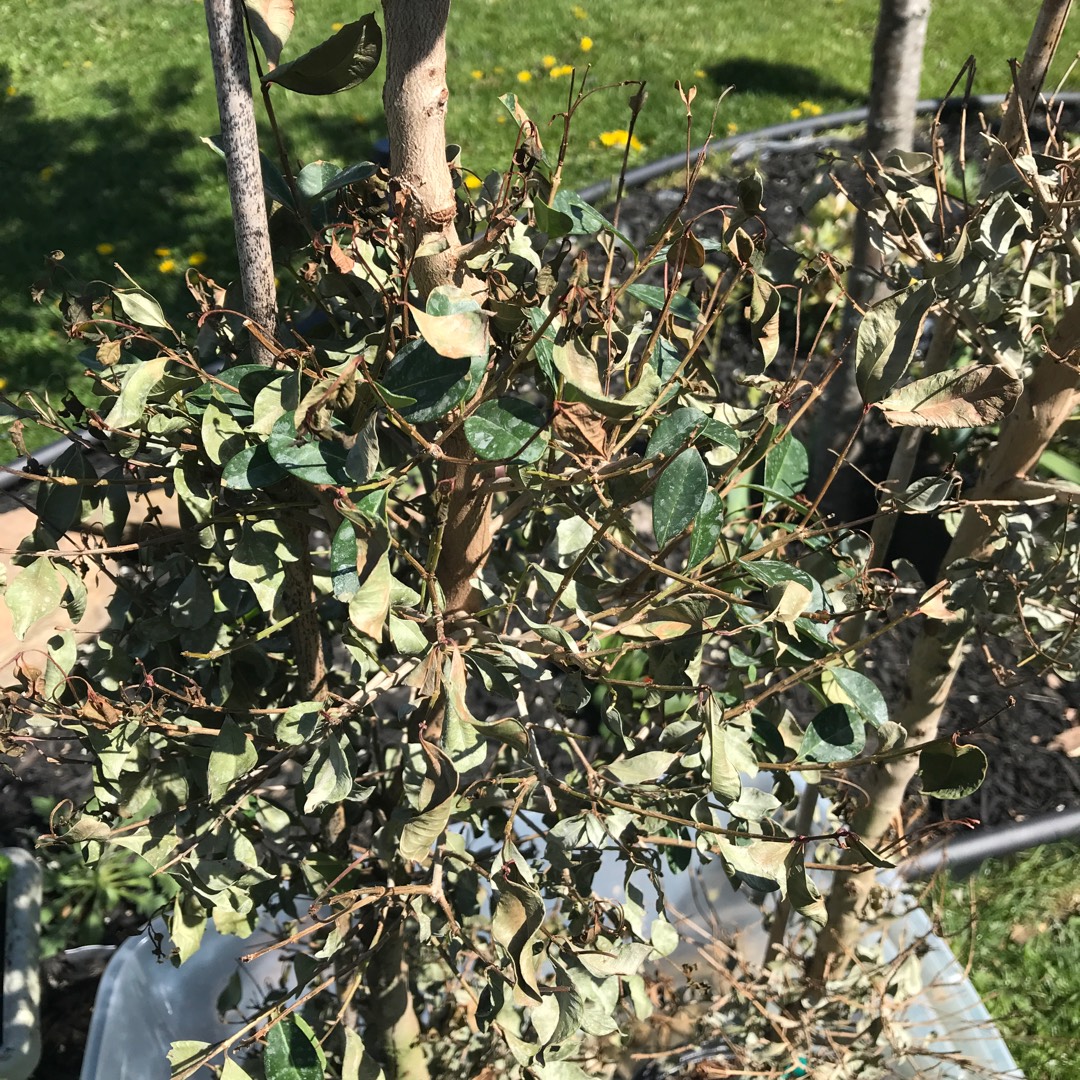
Eugenia myrtifolia 'Monterey Bay' syn. Syzygium paniculatum 'Monterey Bay'
Brush Cherry 'Monterey Bay'
Eugenia are woody evergreen trees and shrubs, some grown as ornamental plants, and a few for their edible fruits. The four-petalled flowers, which have a cluster of white stamens with yellow anthers, are borne on long stalks. 'Eugenia uniflora' is a large shrub or small tree that has a conical form. The leaves and branches have a spicy fragrance, when crushed or bruised, and this can cause respiratory discomfort in some susceptible people. Newly emerged leaves are bronze, or copper- coloured color, before turning to a deep shiny green, then red in Winter. The four-petalled flowers are borne on long stalks, and have a cluster of white stamens with yellow anthers. The flowers are followed by ribbed green fruits that turn orange, to red, to dark red. 'Monterey Bay' is a branching, tall, richly coloured, tall shrub with reddish-bronze new growth that remains reddish bronze over a long season. The flowers are creamy white and are followed by rose-purple fruit. This plant is Ideal for formal hedges and topiary, or can be planted in groups to create a dense screen.
-
Full sun
-
Very little water
-
Frost Hardy: 23F (-5°C)
-
Free draining
Common name
Brush Cherry 'Monterey Bay'
Latin name
Eugenia myrtifolia 'Monterey Bay' syn. Syzygium paniculatum 'Monterey Bay'
type
Evergreen Trees or Shrubs
family
Myrtaceae
ph
6.5 - 7.6 Acid - Neutral
Plant & bloom calendar
-
Best time to plant
-
When the plant will bloom
full grown dimensions
 2.50 M
5.00 M
2.50 M
5.00 M
Eugenia myrtifolia 'Monterey Bay' syn. Syzygium paniculatum 'Monterey Bay'
Eugenia are woody evergreen trees and shrubs, some grown as ornamental plants, and a few for their edible fruits. The four-petalled flowers, which have a cluster of white stamens with yellow anthers, are borne on long stalks. 'Eugenia uniflora' is a large shrub or small tree that has a conical form. The leaves and branches have a spicy fragrance, when crushed or bruised, and this can cause respiratory discomfort in some susceptible people. Newly emerged leaves are bronze, or copper- coloured color, before turning to a deep shiny green, then red in Winter. The four-petalled flowers are borne on long stalks, and have a cluster of white stamens with yellow anthers. The flowers are followed by ribbed green fruits that turn orange, to red, to dark red. 'Monterey Bay' is a branching, tall, richly coloured, tall shrub with reddish-bronze new growth that remains reddish bronze over a long season. The flowers are creamy white and are followed by rose-purple fruit. This plant is Ideal for formal hedges and topiary, or can be planted in groups to create a dense screen.
Flowering
From Late Spring TO Early Summer
The flowers appear in late Spring and early Summer
Propagating by cuttings
From Late Spring TO Early Summer
Take softwood cuttings from new growth early in the day in Spring or early Summer. Cut, neatly, a 4" approx. piece of a non-flowering shoot, pinch out the tip, and cut off the bottom leaves. Dip the bottom of the cutting in hormone rooting powder, and carefully place in a pot of cutting compost with the leaves just above the level of the compost. Water, label, cover with a polythene bag, and place in a warm, bright place, out of direct sunlight. Take the polythene bag off periodically for a while for ventilation (at least twice a week)
Plant
From Early Spring TO Late Spring
Plant young plants in a partially sunny site in well-draining soil in Spring. Water in well, and keep well watered (but not waterlogged) until established








